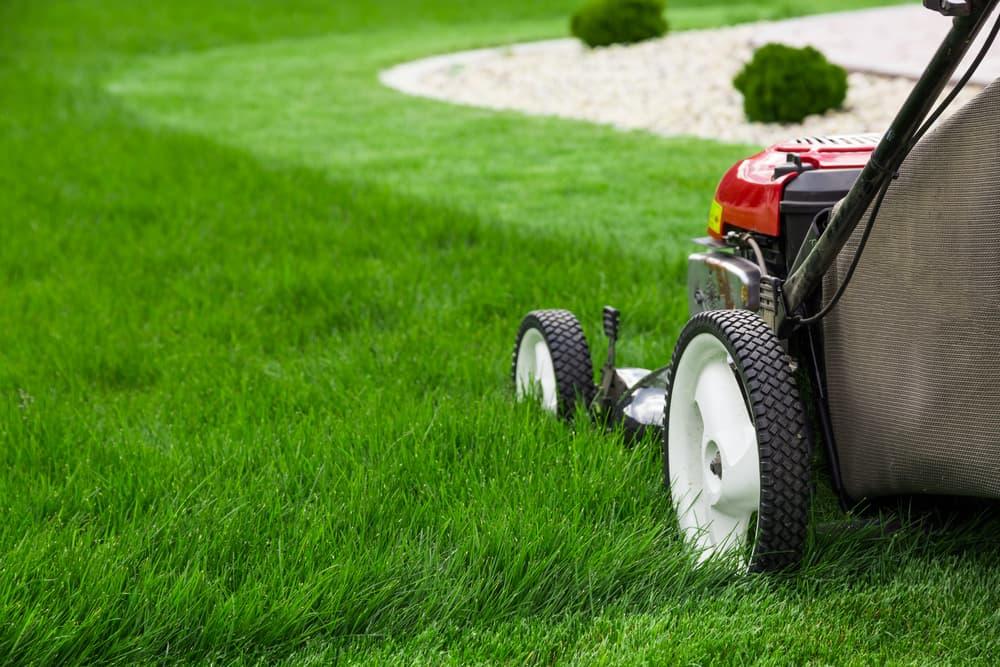Have you just bought a new property recently? Or is this your very first time preparing for your own lawn care routine? Then, you might find it a little bit daunting to maintain and care for your landscape.
Where to begin? Which equipment or devices to rent/purchase? Our lawn care tips for beginners below will help you answer all of these questions.
Tips on mowing a lawn
Beginners are not the only ones having troubles mowing their lawn correctly. Some homeowners might also have been mowing their lawn the wrong way their entire life and don’t even know it – until they check out our tips below!
Regular maintenance is necessary
Therefore, you should mow your lawn at least four times a month, but don’t trim it too short. Only when you get the desired height can the leaf surface receive as much sunlight as expected.
Only use sharp blades
Lawn mower is the most important equipment in any lawn mowing project. Instead of using dull blades to tear your lawn and make it unhealthy and unsightly, you can have a cleanup whenever using sharp ones.
Tips on watering
Watering sounds like an easy step, but in fact, properly watering your lawn might be one of the most daunting tasks.
Rather than providing your landscape with water when it gets dry; you have to keep your lawn fully hydrated so that it will never become too bogged down.
If you don’t want to over-saturate your lawn, water it once or twice a week
Water your plants deeply enough for all the moistures to get down into their roots. Not only being unable to bring the moisture to where it needs to go, but shallow watering may also dry out your grasses.
Avoid working in the hottest time of the day
If you don’t want to cause heat stress on the grass, it is highly recommended to mow it either in the mid- and late-mornings or evenings.
Never mow your lawn when the grass is wet
If your grass is dry, it is upright and easy to be cut. Not only keeping your lawn healthier but cutting the grass when it is dry will also keep your clothes clean. Whereas the water will absolutely weigh down wet grass blades.
Tips on fertilizing your lawn
Fertilization is the next essential factor in our lawn care tips for beginners. Rule of thumb: give your lawn everything it needs.
Regularly check your soil pH
Only when knowing the exact kind of soil you are working on can you amend it to help your lawn and land flourish.
Don’t fly blind and guess what the landscape requires, but make use of the pH test available at a nearby gardening store or agricultural agent to measure the alkaline or acidic level of your soil.
Use lime fertilizers to help balance too acidic soil out. And choose an acidic treatment to feed too basic soil.
Only fertilize your lawn when needed
Twice per year is such a perfect frequency. It is wise to fertilize hot climate grasses in the winter or spring and cool season grasses in the summer or spring.
To insulate your plants and give them enough nutrition, you can consider using compost which is an eco-friendly and cost-effective method to keep your greenery healthier and happier.
Tips on seeding
Which types of grasses that can work best to create an exceptional lawn? It depends on the growing region.
Region-appropriate grass varieties will need less water and nutrition as well as lower maintenance.
For example, warm-season grasses like Bermudagrass, Bahiagrass, Centipede grass, and Zoysia grass peak in growth in the scorching heat and high temperatures in the summer. They flourish in tropical zones.
And cool-season grasses like Perennial Ryegrass, Kentucky Bluegrass, Fine fescues, and Tall Fescue thrive in cool temperatures in spring and autumn in northern zones.
Though a mixture of warm- and cool-season grasses are common in the transition zone, the best varieties are the cool-season ones.
Conclusion
Do you want to give your lawn a perfectly gorgeous look? Then, you have to look after and regularly maintain it.
Without our lawn care tips for beginners above, it is difficult and even impossible to achieve thick, clean, healthy, green, and luscious lawn.






















